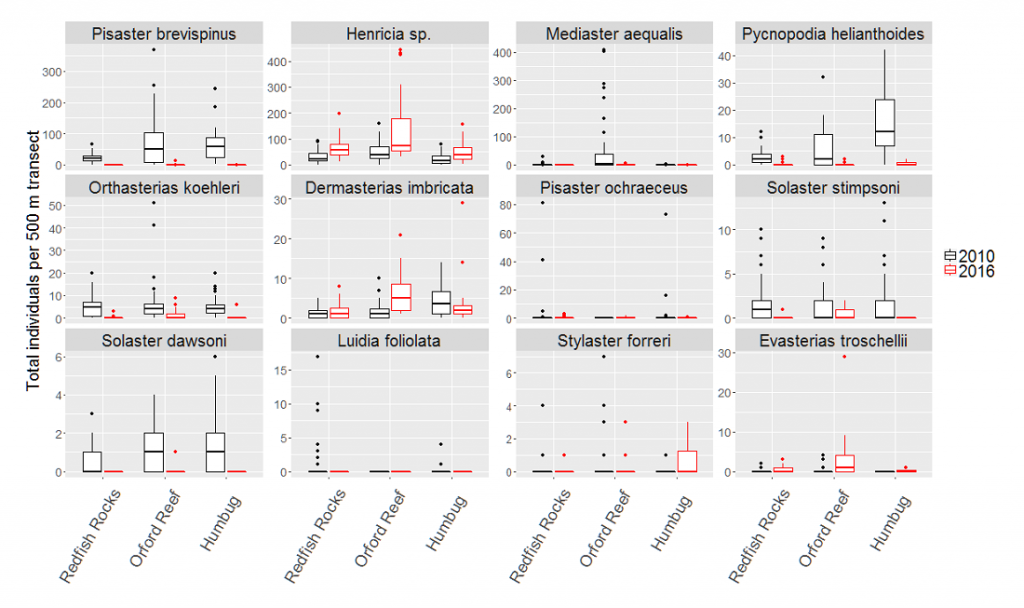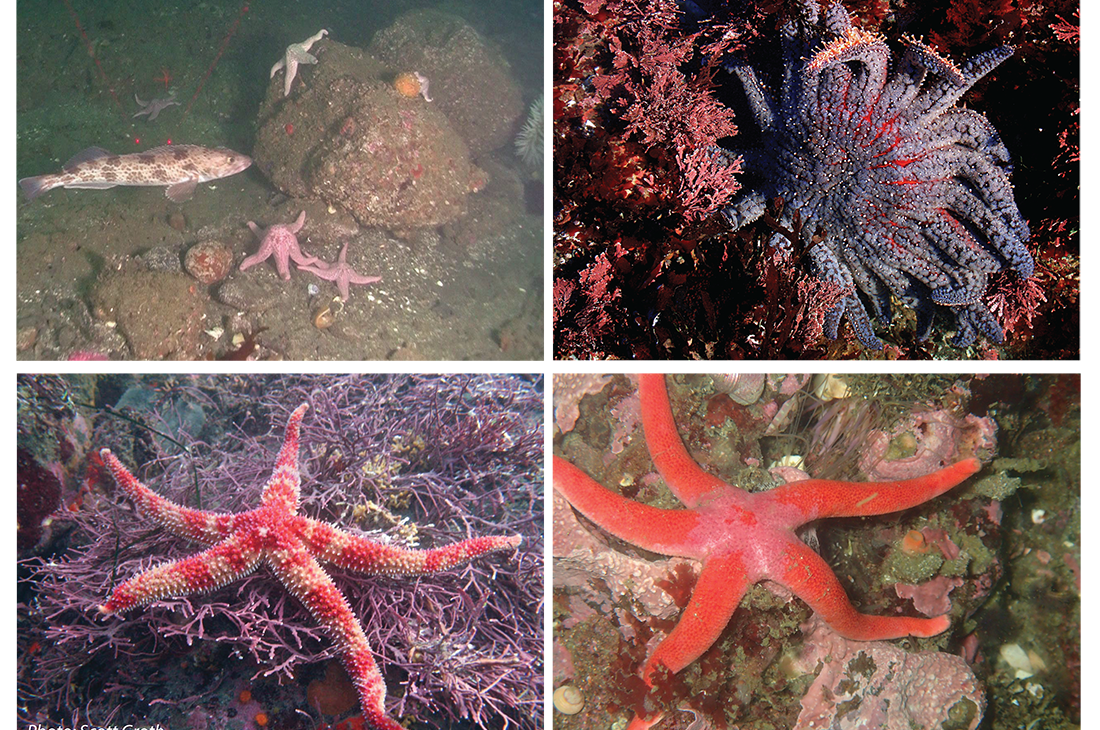Learning About Subtidal Sea Stars Post Wasting Disease
Though our fall ROV (Remotely Operated Vehicle) video survey for Cascade Head was canceled due to the COVID-19 pandemic, ODFW has been busy analyzing ROV data from previous sampling years.
The Effects of Wasting Disease Went Far Beyond Ochre Stars
We’ve described the dramatic changes observed in intertidal ochre star (Pisaster ochraceus) populations associated with the sea star wasting disease outbreak that hit Oregon in 2014. Our latest efforts are now focusing on exploring changes in the abundance of 11 sea star species that live subtidally (i.e. underwater, below the low tide mark) in the Redfish Rocks Marine Reserve.
ROV surveys conducted in 2010, pre-sea star wasting disease, and 2016, post-sea star wasting disease, are showing that five species have drastic declines in total individuals observed per transect surveyed: (1) pink stars (Pisaster brevispinus), (2) sunflower stars (Pycnopodia helianthoides), (3) rainbow stars (Orthasterias koehleri), and the two sun stars (4) Solaster stimpsoni and (5) S. dawsoni. These observations hold true not only at the Redfish Rocks Marine Reserve but also outside of the reserve, at the comparison areas of Orford Reef and Humbug.
Not All Species Showed Drastic Declines
For example, the blood star (Henricia spp.) appears to have increased across all sites whereas observations of the sand star (Luidia foliolata) do not appear to have changed between 2010 and 2016.

ROV is the Go-To Tool For Bottom-Dwelling Invertebrates
Marine reserve ROV video surveys provide valuable data on the impact of sea star wasting for a wide range of rarely studied sea star species and other bottom-dwelling invertebrates. Many of these species live in deep habitats that can only be surveyed effectively with the ROV. In addition, the sheer amount of video data that the ROV can gather makes it the go-to tool for understanding seafloor invertebrate communities.
Though there are numerous reports available on sea star wasting and its impact on the ochre star, Pisaster ochraceous, or on the sunflower star, Pycnopodia helianthoides, there are relatively few on how wasting disease has impacted other subtidal sea star species. We are in the process of exploring changes seen in our marine reserve ROV surveys at Redfish Rocks and comparing them with changes observed in our past surveys at Cascade Head and Cape Perpetua. These three reserves have rocky reef habitat located in deep water that are surveyed with the ROV. The reserves at Otter Rock and Cape Falcon have rocky reef habitat too shallow for ROV surveys. Invertebrate data in these latter two reserves come from less-efficient SCUBA and video lander surveys.
ROV surveys have the added benefit of providing a permanent video record that can be referenced at any point in the future. As a core part of ODFW’s continued, long-term marine reserves monitoring, ROV surveys will continue to expand our understanding of how various sea stars species and other invertebrates respond, recover or adapt to changing environmental conditions over time.
